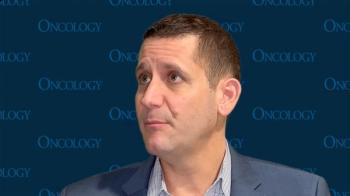
Fumiko Chino, MD, on Next Steps in Evaluating Medicare’s Impact on Cancer Mortality Rates
The expert explained how states that expanded Medicaid coverage saw a steeper decline in cancer mortality rates, and next steps for further evaluation.
States that expanded Medicaid coverage saw a steeper decline in cancer mortality rates, compared to those that didn’t follow the passage of the Affordable Care Act of 2010, according to Fumiko Chino, MD, and colleagues.
“What we found is that there really was a mortality difference between the 2 state cohorts and that unfortunately, there's been no cancer disparities. So basically, patients who live and expanded states, quite simply do better,” she explained in an interview with CancerNetwork. “And they did better even before the Affordable Care Act. But there was an additional cancer mortality benefit from states that expanded Medicaid.”
Chino went on to discuss the clinical implications of their study, as well as next steps.
Transcription:
I think the driving line for me is that cancer care really shouldn't be a political issue. But unfortunately, we really know that the debate over health insurance is. And I think that our study really helps show that a national healthcare initiative like the Affordable Care Act can really make a difference. And that health insurance matters. I think it's just as simple as that. I don't think it's a political issue.
I really do think that our true North, in terms of taking care of patients is just wanting what's best for them, what allows them to have the best access to care, a timely access to care, and then most treatment options. And I think if it's a difference of having no insurance versus newly acquired Medicaid insurance, I think we can show that the Medicaid insurance really makes a difference.
As I mentioned earlier, we only have a couple of years of follow-up data after the Affordable Care Act was rolled out, for the calculations from 2015 to 2017. So basically, as every year as we get more data, I think we could potentially show an even bigger difference. So just more time will help. But then also we wanted to look at specific patient populations to specific types of cancers to show maybe there were certain cancers that really did have the most benefit and we have some ideas of which cancers to look at first, but those would be the next steps for this analysis.
Newsletter
Stay up to date on recent advances in the multidisciplinary approach to cancer.
















































































